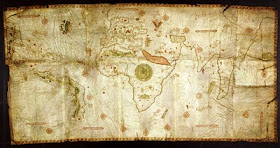[1] Description: Japanese world map from a unknown author dated to 1875, the 8th year of the Emperor's Meiji's reign.

[2] Description: Charles Desilver's world map, published in his New Universal Atlas 1856/USA.

[3] Description: World map made by the English cartographer, engraver and publisher Aaron Arrowsmith in 1812.
[6] Description: Political world map illustrated by the English artist Walter Crane showing the extent of the British Empire in 1886.

[7] Description: Dutch world map from Otto Petri published in 1860.


[2] Description: Charles Desilver's world map, published in his New Universal Atlas 1856/USA.

[3] Description: World map made by the English cartographer, engraver and publisher Aaron Arrowsmith in 1812.

[4] Description: Map of the world centered on America prepared by the American altlas publisher Joseph Hutchins Colton in 1852.


[5] Description: Japanese world map in two hemispheres dating to 1848 by Shincho Kurihara and Heibe Chojiya.


[6] Description: Political world map illustrated by the English artist Walter Crane showing the extent of the British Empire in 1886.

[7] Description: Dutch world map from Otto Petri published in 1860.






































 ]\
]\_1190+-+Kopie+%282%29.PNG)



